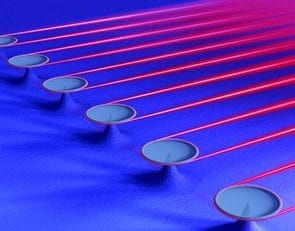Microcavities have been extensively used to confine and manipulate light. Whispering gallery mode microcavities confine photons by means of continuous total internal reflection along a curved and smooth surface. The long photon lifetime, strong field confinement, and in-plane emission characteristics make them promising candidates for novel light sources and biochemical sensors. These circular microcavities, however, show intrinsically isotropic emission due to their rotational symmetry. For deformed microcavities the rotational symmetry is broken. Therefore they can provide not only the directional emission but also be efficiently excited by a free-space optical beam. Until now their practical use has been hampered by low Q-factors due to large scattering losses.
Yun-Feng Xiao, Qihuang Gong (Peking University) and co-workers have realized for the first time on-chip deformed microcavities that show both highly unidirectional emission and ultrahigh Q factors. These cavities show Q-factors of more than 100 million due to an almost atomically smooth surface. Nearly perfect pattern transfers in the two-step dry etching and reflow process support highly intrinsic unidirectional emission even for a slight deformation. By doping the microcavities with erbium they were able to show lasing at 1550 nm using free-space optical pumping with the threshold as low as 2 μW. This opens up the possibility for new investigations using a convenient free-space on-chip ultrahigh-Q microlaser.
The research was reported in Advanced Optical Materials, a new section in Advanced Materials dedicated to breakthrough discoveries and fundamental research in photonics, plasmonics, metamaterials, and more, covering all aspects of light-matter interactions. To get Advanced Optical Materials email alerts click here.


















